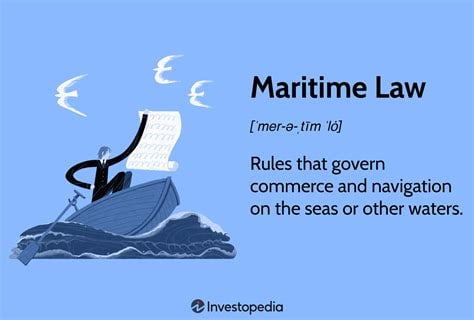
- Introduction
- Types of Maritime Zones
- Legal Basis of Maritime Zones
- Implications for Maritime Activities
- Table of Maritime Zones
- Conclusion
-
FAQ about Maritime Zones under International Law
- What are maritime zones?
- How many maritime zones are there?
- What is the territorial sea?
- What is the contiguous zone?
- What is the exclusive economic zone (EEZ)?
- What is the continental shelf?
- What is the legal basis for maritime zones?
- What are the rights and obligations of coastal states in maritime zones?
- What are the rights and obligations of other states in maritime zones?
- How are maritime disputes resolved?

Introduction
Greetings, readers! Welcome to our in-depth exploration of maritime zones under international law. In today’s interconnected global society, understanding the legal frameworks that govern the world’s oceans is of paramount importance. This article will delve into the various zones established by international law, their legal basis, and their implications for maritime activities. So, buckle up and prepare to navigate the fascinating realm of maritime law!
International law has been instrumental in establishing a comprehensive framework for the peaceful and equitable use of the world’s oceans. This legal framework, developed through a series of treaties, conventions, and international agreements, has established various maritime zones, each with its own specific purpose and legal status.
Types of Maritime Zones
Territorial Sea
The territorial sea is the zone extending from the baseline of a coastal state to a distance of 12 nautical miles. Within this zone, the coastal state exercises full sovereignty, just like on its land territory. It can enforce laws, regulate economic activities, and exercise criminal and civil jurisdiction.
Contiguous Zone
The contiguous zone extends beyond the territorial sea up to a distance of 24 nautical miles from the baseline. In this zone, the coastal state has limited jurisdiction to prevent, investigate, and punish infringements of its customs, fiscal, immigration, or sanitary laws that occur within its territorial sea or that may affect its territory.
Exclusive Economic Zone (EEZ)
The EEZ extends beyond the territorial sea up to a distance of 200 nautical miles from the baseline. In this zone, the coastal state has exclusive rights to explore, exploit, conserve, and manage natural resources, both living and non-living. Other states have the right to navigate and lay cables and pipelines through the EEZ.
Continental Shelf
The continental shelf refers to the seabed and subsoil of the submarine areas adjacent to the coast, extending beyond the territorial sea to the outer edge of the continental margin, or a distance of 200 nautical miles from the baseline. In this zone, the coastal state has sovereign rights over the exploration and exploitation of natural resources.
High Seas
The high seas refer to the areas of the ocean beyond the territorial sea, contiguous zone, EEZ, and continental shelf. These areas are not subject to the sovereignty of any state and are open to all states for navigation, fishing, scientific research, and other lawful uses.
Legal Basis of Maritime Zones
The concept of maritime zones under international law is rooted in the United Nations Convention on the Law of the Sea (UNCLOS). Adopted in 1982, UNCLOS is widely considered the "constitution of the oceans" and provides a comprehensive framework for managing the world’s oceans and their resources. Other major treaties and international agreements, such as the Geneva Conventions on the Law of the Sea and the Montego Bay Declaration, have also contributed to the development of the legal framework for maritime zones.
Implications for Maritime Activities
The establishment of maritime zones under international law has profound implications for maritime activities such as fishing, shipping, oil and gas exploration, and marine conservation. Coastal states have the responsibility to manage and protect their maritime zones, while other states have the right to navigate and conduct other lawful activities in these zones.
Fishing Rights
Coastal states have the exclusive right to fish within their EEZs. They can regulate fishing activities, set quotas, and enforce conservation measures. Fishing in the high seas is regulated by regional fisheries organizations and international agreements.
Shipping Lanes
The establishment of territorial seas and EEZs has led to the development of shipping lanes, designated routes that vessels must follow to ensure safe and efficient navigation. Coastal states have the responsibility to maintain the safety of navigation within their maritime zones.
Oil and Gas Exploration
The EEZ and continental shelf provide opportunities for coastal states to explore and exploit natural resources. They can grant licenses to companies to drill for oil and gas and establish regulations to protect the environment.
Marine Conservation
The conservation of marine ecosystems is a global concern. Coastal states have the responsibility to protect and preserve their EEZs and other marine areas under their jurisdiction. They can establish marine protected areas, regulate fishing activities, and implement other conservation measures.
Table of Maritime Zones
| Zone | Distance from Baseline | Jurisdiction |
|---|---|---|
| Territorial Sea | Up to 12 nautical miles | Full sovereignty |
| Contiguous Zone | 12-24 nautical miles | Limited jurisdiction for customs, fiscal, immigration, and sanitary laws |
| Exclusive Economic Zone (EEZ) | 24-200 nautical miles | Exclusive rights to explore, exploit, conserve, and manage natural resources |
| Continental Shelf | Variable, up to 200 nautical miles | Sovereign rights over natural resources |
| High Seas | Beyond 200 nautical miles | No sovereignty, open to all states for lawful uses |
Conclusion
Readers, this article has provided a comprehensive overview of maritime zones under international law. The legal framework established by UNCLOS and other international agreements has created a balance between the rights and responsibilities of coastal states and other states in the use of the world’s oceans. Understanding the different maritime zones and their legal implications is crucial for navigating the complex world of maritime law.
We invite you to explore our other articles on related topics, such as the history of maritime law, the role of the International Maritime Organization (IMO), and the challenges facing the global ocean governance system. Thank you for reading!
FAQ about Maritime Zones under International Law
What are maritime zones?
Maritime zones are areas of the sea that are subject to the sovereignty or jurisdiction of a coastal state.
How many maritime zones are there?
There are four main maritime zones: the territorial sea, the contiguous zone, the exclusive economic zone (EEZ), and the continental shelf.
What is the territorial sea?
The territorial sea is the area of the sea that extends from the baseline of a coastal state’s territory to a distance of 12 nautical miles.
What is the contiguous zone?
The contiguous zone is the area of the sea that extends from the outer limit of the territorial sea to a distance of 24 nautical miles.
What is the exclusive economic zone (EEZ)?
The EEZ is the area of the sea that extends from the outer limit of the territorial sea to a distance of 200 nautical miles.
What is the continental shelf?
The continental shelf is the area of the seabed and subsoil that extends from the outer limit of the territorial sea to the outer edge of the continental margin.
What is the legal basis for maritime zones?
The legal basis for maritime zones is the United Nations Convention on the Law of the Sea (UNCLOS).
What are the rights and obligations of coastal states in maritime zones?
Coastal states have the right to explore and exploit the natural resources of their maritime zones, and they have the obligation to protect the marine environment.
What are the rights and obligations of other states in maritime zones?
Other states have the right to navigate and overfly maritime zones, and they have the obligation to respect the sovereignty and jurisdiction of coastal states.
How are maritime disputes resolved?
Maritime disputes are typically resolved through negotiation, mediation, or arbitration.




